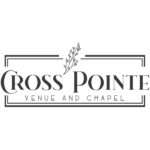Every $1 that is spent on marketing campaigns is a $1 lost unless you work on getting results.
Never sit back and assume that your post on Facebook will generate thousands of dollars of business. The fact is – it won’t!
If you follow the rules and you are proactive, you should see $5 in return for every $1 that is efficiently and effectively spent. Let’s review how you can measure how successful your campaign is.
Measurements of Marketing Results
I think the key word here, is campaign. There are a lot of tools online that allow you to create a campaign and to manage the budget and ROI on that campaign. All of these tools give you a great picture of that particular campaign and not much else. They allow you to enter in costs involved with the campaign such as email list rental, advertising cost, brochures, etc. etc.
I tend to view campaigns as a living; breathing and growing entities that inter mingle with other campaigns and functions of the company. Any one campaign is linked to another and to other costs that are not always taken into account when calculating ROI. The reason for that, is that it is tough to do that calculation. The online apps allow you to track specific costs for that campaign and even then, they typically just have one field for budget, and how much you spent, so you end up tracking costs in more detail in another spreadsheet or in Quickbooks.
Some of things that can be typically missed when calculating costs when you work for a small business are:
- · Support Admin Staff
- · Software Costs
- · Sales staff costs
- · Management costs
- · Other technology costs
- · Shipping costs
- · Outside agency costs
As you can see, these are all things that are typically not associated with costs within a marketing campaign. Larger corporate companies have intense calculations and algorithms that they use to identify if a campaign has been successful. A lot of these costs are overlooked when a small business works out the cost of any marketing.
It is hard to not compartmentalize campaigns and to look at each mailing, or each Facebook post. All your marketing efforts are in fact one long campaign that are all linked together, overlapping in some cases and that need support from all the other departments in the company. If you do want to segregate campaigns, find out what the running costs of the company were at that time, and estimate what percentage of those running costs should be taken into account when calculating your ROI. Then and only then will you get a true representative figure of how profitable your one small section of your campaign was.
Is your marketing plan working?
I try to be prepared for this question. I like to blow people away with numbers and positive results and sales. These numbers can be based on all sorts of things. Here are a few.
- · Sales
- · Clicks
- · Opens
- · Event Attendees
- · Responses
- · Information requests
- · Not interested replies
- · Un-subscribers
I had a boss ask me once why I am tracking negative responses. After I explained that negative responses help me to define client personas and targeting in the future, he understood. The fact is, when others ask you this question, they are wanting to know if there are sales being generated from that one compartmentalized campaign. Remember that your ROI calculations are based on the cost of the campaign and the sales generated from that campaign. This can also be described as a revenue to cost ratio – so if you have $500 in sales and the campaign cost $100, you have a revenue to cost ratio of 5:1. This is typically the best way for you to demonstrate results to others that are asking about success rates for different campaigns.

To be honest, in a small business the cost ratio is all you need to identify if a particular campaign has been successful. Just take into consideration that one campaign may have only be successful because it ran on the back of a campaign that generated a much lower cost ratio. For example, blog writing generates for the most part, very few sales. However, blog writing can be what keeps your customers coming back to your website and Facebook page. It keeps them interested in your company and seeing your promotions and ordering new items. So in fact it is taking several different campaigns to keep your customer spending more money with your company.
Remember it is always cheaper to keep a customer than to find a new one!
So the key is as a small business is to choose where you spend your marketing dollars carefully. A well designed website and active Facebook page is the minimum that you should be doing. Use those tools, to run promotions, incentives, events, and to talk to your customers! Even if you are selling to other businesses, it is always personal. Ironically, the marketing campaigns that I was on receipt of were beneficial to me and to my company. If you look at events run by larger companies, they always choose a cool location, give away gifts and have great food available. Those are the events and the companies that you personally remember and will go back to time and time again.
 |
| www.webdesignshop.us |
If you have any questions or would like more information please call 601-667-0009 or email alyson@webdesignshop.us
















Leave a Comment: